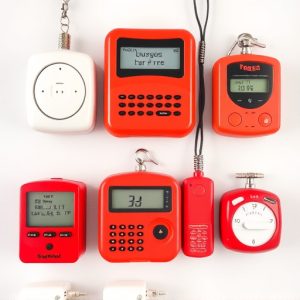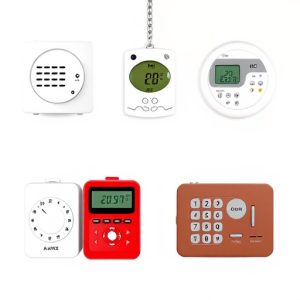Personal Attack Alarms: Maximizing Sound Range for Lone Worker Safety
Lone workers face safety challenges due to isolation, which can slow emergency response times. To ad…….
Lone workers face safety challenges due to isolation, which can slow emergency response times. To address this, employers should invest in specialized equipment like Personal Attack Alarms (PAA). PAAs emit distinct, high-pitched sounds within a defined range, enabling quick distress signaling. Key features include decibel levels between 80-120 and easily activatable designs. Choosing the right PAA involves prioritizing sound range and customizable alarms for effective alert systems. Training is vital to ensure workers understand how to use these devices as part of a comprehensive safety strategy, enhancing overall workplace security.
In today’s digital era, lone workers face unique safety challenges. Understanding the risks associated with isolated work environments is paramount. This article delves into crucial solutions, spotlighting the essential role of Personal Attack Alarms (PAA) in enhancing worker safety. We explore key features to consider, particularly the critical Personal Attack Alarm Sound Range, and provide actionable strategies for implementing and training with these systems for maximum effectiveness.
- Understanding the Risks of Lone Work
- The Role of Personal Attack Alarms
- Key Features to Consider: Sound Range and More
- Implementing and Training for Effective Safety Alerts
Understanding the Risks of Lone Work
Lone workers, by definition, operate independently and may be isolated in their tasks, increasing potential risks. This scenario can lead to delays in assistance in case of emergencies, making it crucial for employers to implement effective safety measures. Understanding these risks is the first step towards ensuring worker safety.
One significant risk is the inability to promptly emit distress signals. Traditional communication methods might not be readily available or reliable in remote areas. A Personal Attack Alarm, equipped with a distinct sound and range, can serve as a vital tool. By emitting a loud, high-pitched alarm within a specified range, these devices allow lone workers to signal for help quickly and discreetly, ensuring their safety in case of unforeseen situations.
The Role of Personal Attack Alarms
Personal Attack Alarms play a crucial role in ensuring the safety of lone workers, especially in remote or high-risk environments. These alarms are designed to be a worker’s last line of defense against unexpected attacks or emergencies. When activated, a Personal Attack Alarm emits a distinct and powerful sound with a range capable of alerting nearby colleagues, emergency services, or even passersby. The loud and piercing tone serves as a distress signal, quickly drawing attention to the wearer’s location.
The effectiveness of these alarms lies in their ability to communicate urgency and provide vital seconds for assistance. With a sound range typically extending from 80 to 120 decibels, the alarm can be heard over distances, ensuring that help arrives promptly. This technology empowers lone workers, giving them confidence and peace of mind, knowing that should an incident occur, support is on the way.
Key Features to Consider: Sound Range and More
When selecting a safety alert system for lone workers, several key features should top your list. One of the most crucial aspects is sound range. The ability to trigger an alarm from a distance ensures that help can arrive promptly if a worker encounters an emergency. Systems with longer sound ranges are particularly beneficial in vast or open-plan workplaces, where signals might travel farther.
Additionally, consider features like personal attack alarms designed to be easily activated by the worker in distress. These alarms should be loud and distinct, ensuring they can be heard over ambient noise. Some advanced systems offer customizable alarm sounds, allowing workers to choose alerts that are most noticeable and memorable, enhancing overall safety awareness.
Implementing and Training for Effective Safety Alerts
Implementing and training are pivotal for ensuring the effectiveness of safety alert systems designed for lone workers. These systems, often featuring a personal attack alarm with a distinct sound and range, must be integrated into daily routines and operations. Training sessions should cover how and when to activate these alarms, emphasizing that it’s not just about pressing a button but understanding when to use this feature as part of a broader safety strategy.
It’s crucial to familiarize workers with the specific sounds and ranges their devices offer. For example, a distinct beep pattern or vibration could signify different levels of distress, allowing colleagues or emergency services to swiftly assess the situation. Regular drills and simulations can help demystify these systems, making them more reliable in high-pressure scenarios.
Lone workers face unique risks, but implementing effective safety alert systems, particularly those with robust personal attack alarms and considered sound range, can significantly enhance their protection. By investing in these tools and providing adequate training, organizations can ensure that workers feel secure and are equipped to handle potential emergencies. This proactive approach is vital in minimizing risks and fostering a safer working environment for solo professionals.

